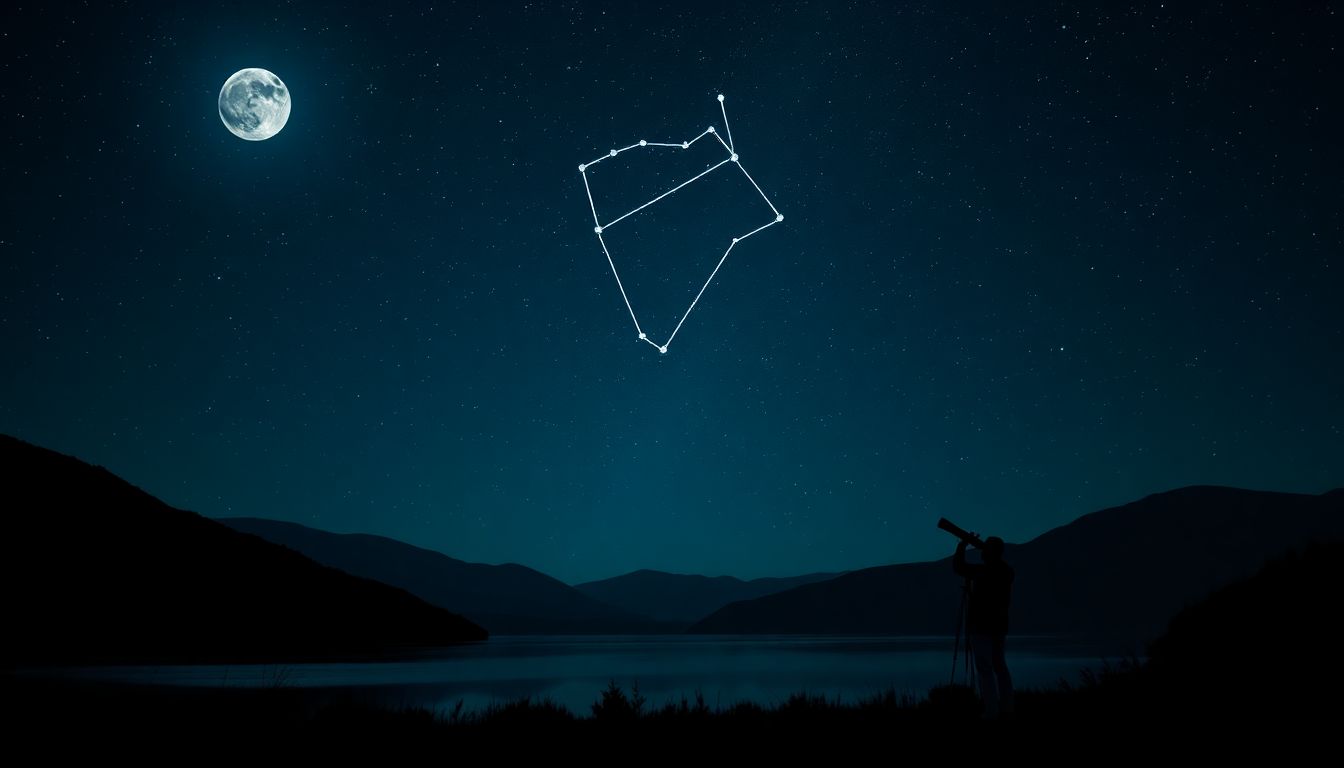
Why the Big Dipper is Important and How to Find It: A Complete Guide to Navigating the Night Sky
Introduction
Humans have watched the stars for thousands of years. One of the most famous groups in the sky is the Big Dipper. It’s more than just a pretty picture — it’s a tool for navigation and a part of many stories. Knowing how to find the Big Dipper makes stargazing easier and more fun. This guide will explain why it’s important and how to locate it on clear nights.
The Significance of the Big Dipper in Astronomy and Culture
The Big Dipper as a Stellar Landmark
The Big Dipper is a bright and easy-to-spot pattern of stars in the northern sky. It’s part of a larger constellation called Ursa Major, or the Great Bear. Because it’s visible in many places, it helps people find directions at night. For astronomers, it’s a handy way to locate other stars and constellations.
Cultural and Historical Significance
Countless stories are told about the Big Dipper across different cultures. Native Americans saw it as a buffalo or a bear, depending on the tribe. In Greek mythology, it’s linked to the story of Callisto and Zeus. In history, sailors and explorers used the Dipper to find north, helping them navigate open waters. Its importance goes beyond science — it’s woven into human stories and legends.
Scientific Importance and Research
Scientists study the Big Dipper to better understand our galaxy. Its position helps locate Polaris, the North Star, which stays fixed in the sky. This makes the Dipper a useful pointer for astronomers learning about stars and the Milky Way. It’s also part of ongoing research to map our night sky more accurately.
How the Big Dipper Can Help in Navigation and Orientation
Navigational Uses in History and Today
Before GPS, sailors looked for the Big Dipper to find north. They knew the two pointer stars, Dubhe and Merak, as guides. Today, hikers and campers still use it to get their bearings at night. It’s a reliable way to stay oriented when GPS fails or isn’t available.
Finding Polaris Using the Big Dipper
Locating the North Star is simple with the Big Dipper.
- Find the seven stars forming the Dipper’s bowl and handle.
- Draw an imaginary line from Merak to Dubhe.
- Extend this line about five times the distance between these two stars. You’ll arrive at Polaris, a bright star near the horizon.
- Polaris isn’t the brightest star in the sky, but it’s steady and easy to spot once you know where to look.
- Remember: at different times of the year, the Dipper’s position shifts, but Polaris remains almost fixed.
Recognizing the Big Dipper in Different Seasons
The Big Dipper’s position changes through the year as the Earth moves around the Sun. In spring and summer, it appears high in the sky. During fall and winter, it dips lower. Keeping these shifts in mind helps to find it no matter the season. It’s also helpful to memorize its shape so you can recognize it quickly.
Strategies and Tips for Finding the Big Dipper in Different Conditions
Best Times and Conditions for Viewing
The best time to see the Big Dipper is in the months of spring, summer, and fall. Avoid nights with a full moon, as bright moonlight can hide the stars. Clear nights with minimal clouds give the best views. Remember, a dark sky far from city lights makes it easier to spot.
Using the Night Sky for Practice
If you’re new to star watching, start with a simple star app or star chart. These tools show you where the constellations are. Use your phone or a printed map to find nearby Orion or Cassiopeia, which can help confirm your location. Learning the shapes of nearby constellations makes finding the Big Dipper easier.
Common Challenges and How to Overcome Them
City lights, fog, and cloudy skies can block your view. If the sky isn’t clear, wait for a better night. Alternatively, try to find a dark spot away from streetlights or go to a local astronomy club event. Sometimes, just rotating your position can help you see the pattern better.
Additional Resources and Tools to Identify the Big Dipper
Star Charts and Maps
Printable star charts are a great way to learn your night sky. They often highlight the Big Dipper in different seasons and locations. Many websites offer free, downloadable maps suited for beginners.
Mobile Apps and Technology
Apps like SkyView and Star Walk let you point your phone at the sky to identify stars and constellations instantly. They’re perfect tools for beginners who want quick guidance. Most apps also show the positions based on your location and the time.
Local Astronomy Clubs and Events
Joining a local club can make learning about the stars easier and more enjoyable. Clubs often host stargazing nights, where experienced astronomers help you identify celestial objects and share stories about the sky.
Conclusion: Unlocking the Wonder of the Night Sky
The Big Dipper isn’t just a pretty group of stars — it’s a navigational tool, a cultural icon, and a window into the universe. Learning how to find it enhances your appreciation of the night sky and can guide you in many practical ways. Regular practice makes spotting the Dipper easier, turning star-gazing into a favorite hobby. Grab a star chart or app, find a dark spot, and start exploring tonight. The universe awaits!

